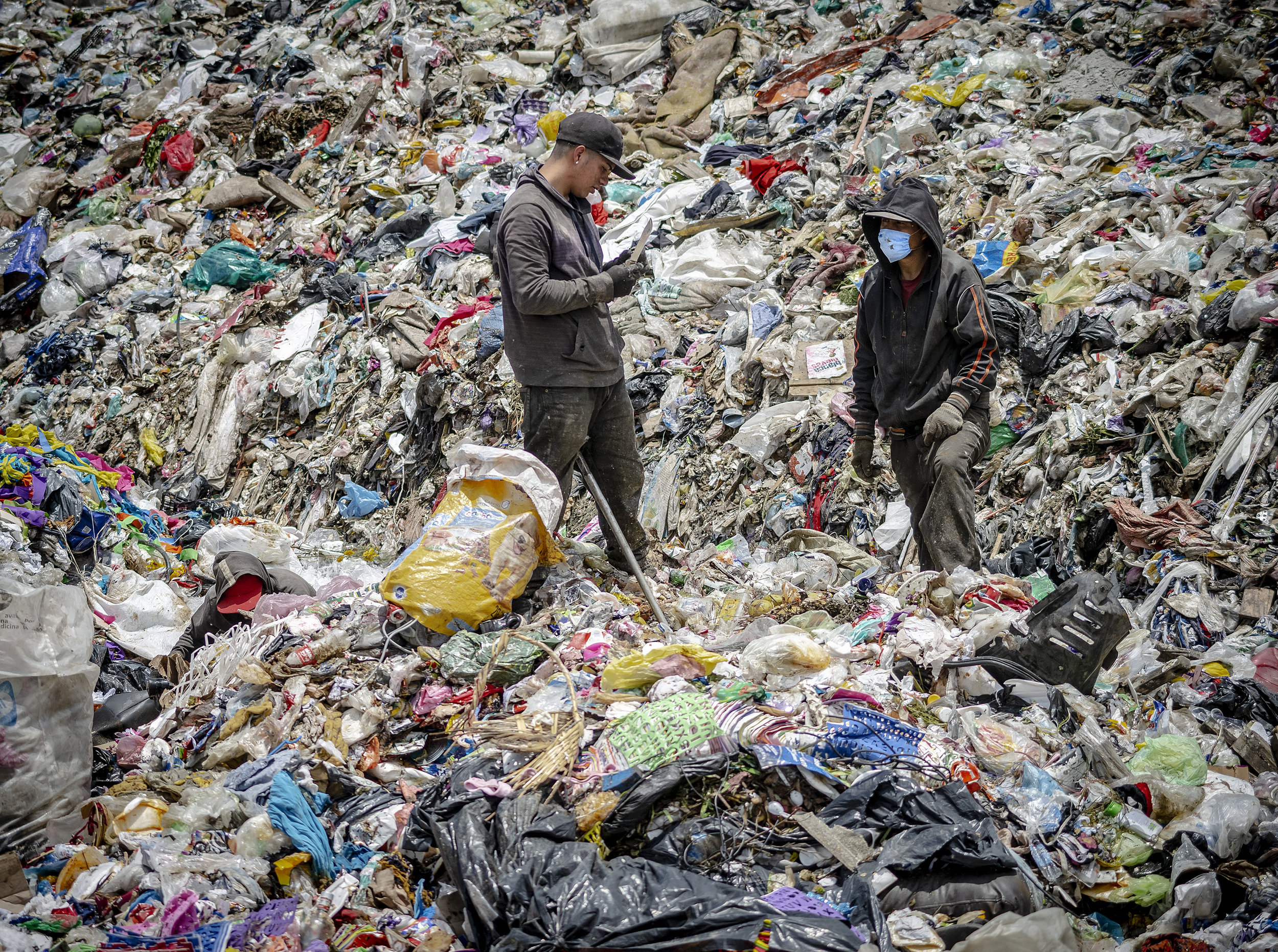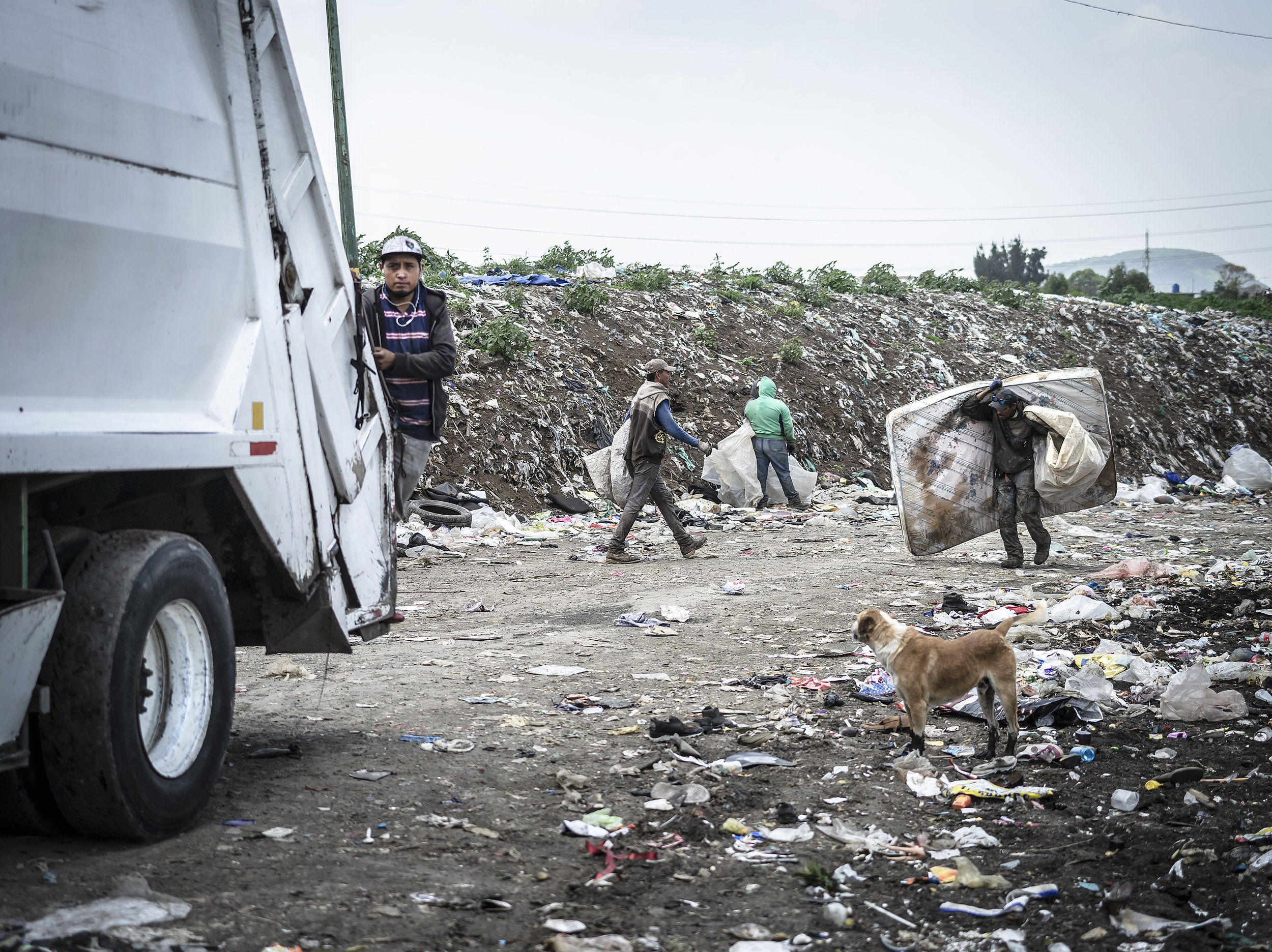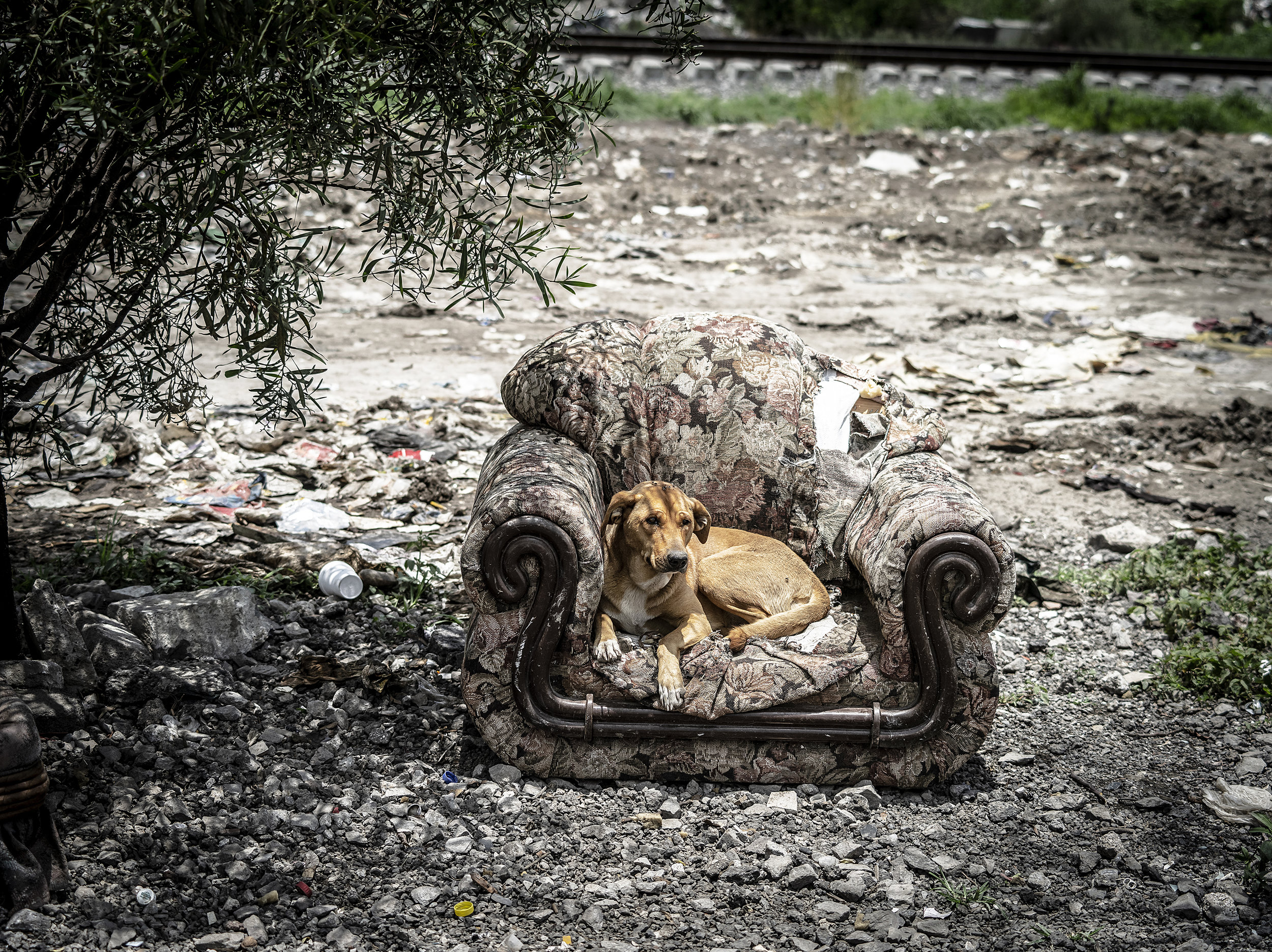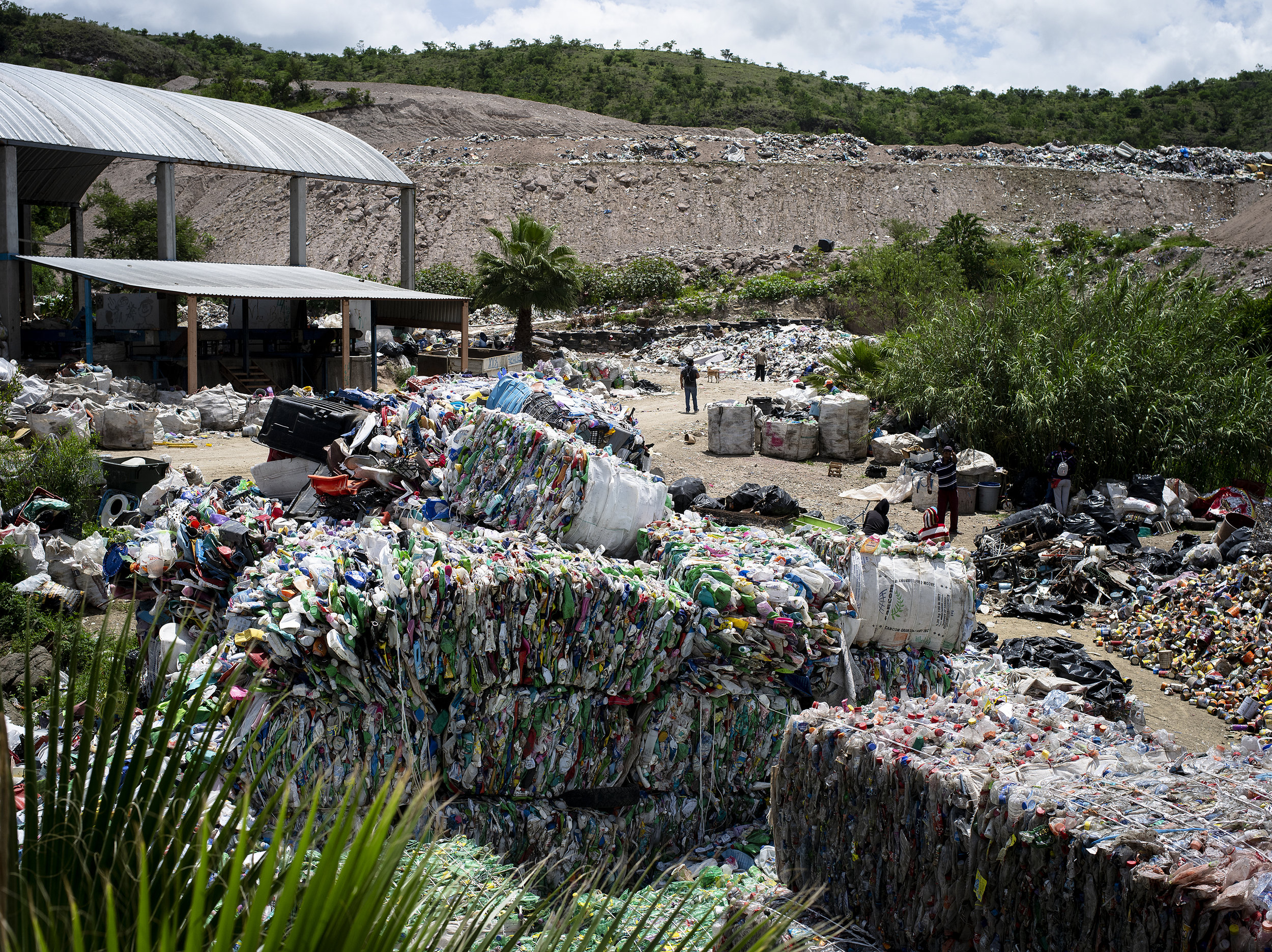There are approximately 1800 dumpsites and 200 sanitary landfills in Mexico. In general, Mexico seems very open about their environmental struggles and achievements. They are progressive in moving towards closing all their dumpsites and finding solutions towards doing so. Mexico City had some of the worst air pollution in the world and even though it is still problematic, the city has come a long way in decreasing the air pollution through policy. I visited 6 dumpsites in Mexico: 2 in Guadalajara, Oaxaca, Naulcapan, Nezahualcóyoti and Coatzacoalcos. In interviews it seems that there are a variety of dumpsites and landfills in different conditions throughout the country. However, there were steps taken in protecting children, animals and, at the least, move towards lining all the sites to protect the soil from the trash.
Nezahualcóyoti II
Nezahualcóyoti II or just Neza II is Mexico’s largest dumpsite that covers 30 acres or nearly 23 football fields. It accepts 1600 tons of trash a day. It receives so much garbage that trucks line up to pick up the trash from Neza II to bring it to another location, because it has reached its capacity. In Mexico, the informal recyclers are called, pepenadores. There are approximately 1000 pepenadores who recycle at Neza II. They are broken up into 6 union systems. Each group works under their own set of rules and within specific boundaries. Animal protection was placed on the site to stop the use of animals to be used for labor. This was the only site where I saw youths accompanying their guardians into the dumpsites.
Nezahualcóyoti I
One generation older was the equally notorious Neza I dumpsite. The ancestor dumpsite existed 30 years ago, but today the location is a clean gas plant that is .25 square miles large. Above ground, there is a hospital, mall, a program to help street kids and a sports center. It was a project that was successfully funded and executed. There are plans to eventually transform Neza II into a similar cleanup project.
Coatzacoalcos
This dumpsite is located close to the Gulf of Mexico and is called Javier Unzaca. It accepts 456 tons of trash a day. Before 2015, there we 50 pepenadores and that number has grown to 150 because there is an increase of trash entering the zone. Recyclers used to make 1600 pesos a week ($83.00 USD). Today they claim to make between 800-1000 pesos a week ($41.00 - $52.00 USD) for working 7am - 8pm weekdays. There is a community adjacent to the dumpsite where people bring some of their recyclables to sort through. The informal sector is organized into one large group who has a 73 year old leader named, Josephina. There is contamination from the dumpsite into the watershed and via open leachate pools. However, they are in the process right now of creating a lining for the dumpsite. Coatzacoalcos has put major efforts into their biogas plant, ecological park, cleanliness and beatification of the city.
Guadalajara
Hasars is a well controlled and privately run landfill that is 1 million square meters large. They are capturing gas and working with a Portuguese company to convert that gas into energy. There is so much gas ready to be released that someone sleeps there to be sure there are no accidental fires. In Guadalajara, pepenadores need to have a permit in order to enter dumpsites and work. This permit allows them 5 years to work in the dumpsite until it expires and then they would need to reapply for the permit. This law only exists in Guadalajara and was developed 10 years ago. There are no children at any of their dumpsites in Guadalajara. Hasars have 30-40 pepenadores sorting the trash and they are all adult men. 700 tons of trash enter each day.
Neighboring this site is another landfill that is much larger and is government run with over 100 pepenadores.
Huajuapan de León, Oaxaca
In Huajuapan de Leon there is a recycling coop run by an organization called SiKanda. They have many various cleanup projects throughout Oaxaca. This particular group is made up of 55 individuals (25 men and 20 women). They are provided with uniforms, better work conditions, work tools and machines, as well as bathrooms and a cafeteria. There are about 45-50 tons of trash coming in a day. Their rights are protected by SiKanda and work 7 hours a day for 3 days a week for 1000 pesos ($52.00 USD).
Naulcapan
Rincón Verde is the name of the dumpsite in Naulcapan and is receives 1200 tons of trash a day. Chelo is one woman who is 60 years old and has been working at the site for 9 years. She has 4 girls and 2 boys. She makes about 1200 pesos a week ($62.00). She explains that they are mostly generational workers there and that they are unwanted by private companies, so it takes guts work informally at the dumpsite. There are 150 pepenadores and the site shifted around but has been Naulcapan’s dumpsite for 35 years.
Special thanks goes to Gustavo Solórzano for making this report possible, as well as, all the individuals who participated from each location.

























































































































